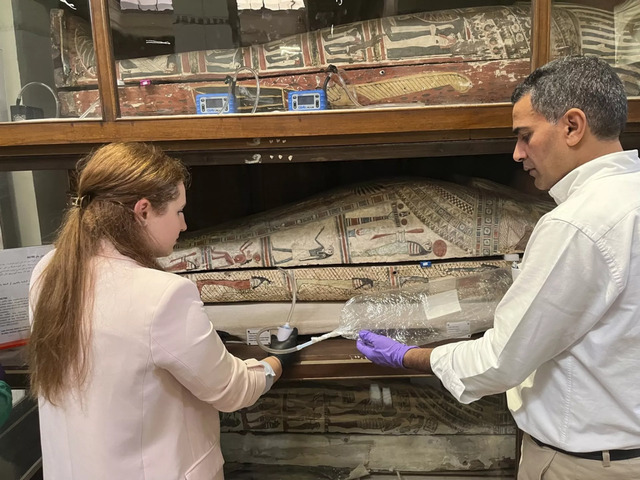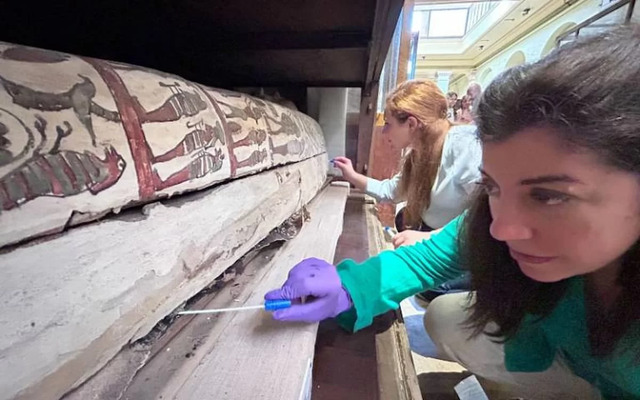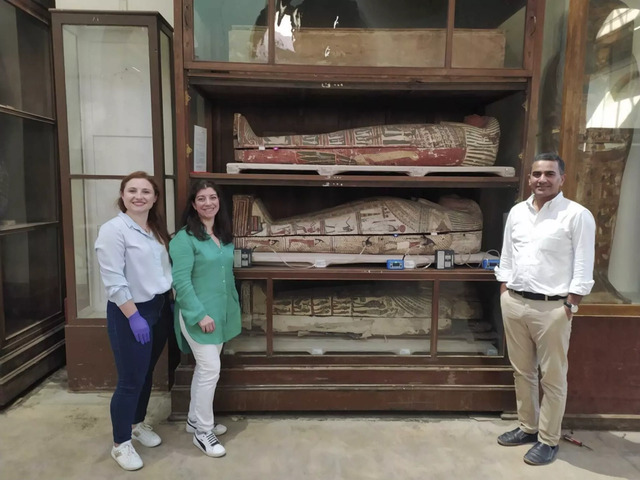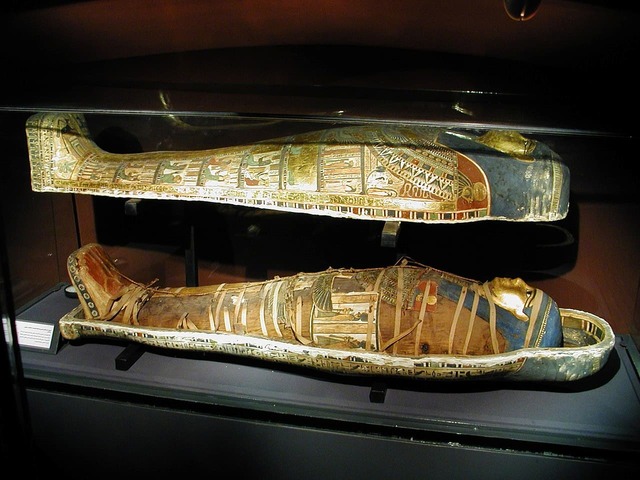The ancient practice of mummification has long fascinated historians and archaeologists, revealing much about Egypt’s culture, beliefs, and rituals. But what if we could experience mummification beyond the visual? A groundbreaking study is taking us closer to that sensory connection by uncovering the unique scents emitted by ancient Egyptian mummies. Through a combination of advanced technology and human perception, researchers have explored these smells, offering new insights into the embalming process and bringing us a step closer to truly understanding the ancient world.
The Methods of Odor Analysis

The team’s research approach was nothing short of innovative. For the first time, both instrumental techniques and sensory analysis were combined to study the scents of mummified remains. The research team utilized an electronic “nose” based on chemical analysis, alongside a panel of trained human “sniffers” to describe the odors. This dual approach allowed the scientists to identify the specific chemical molecules emitted by nine mummified bodies displayed and stored at Cairo’s Egyptian Museum. The electronic nose analyzed the chemical compounds in the air, while the human panel provided a perceptual experience, describing the smells in terms of their quality, intensity, and pleasantness.

This combination of methods made it possible to determine whether the odors originated from the mummies themselves, from modern conservation treatments, or from environmental factors like bacteria or mold. By distinguishing between these sources, the team was able to provide a more comprehensive analysis of the mummies’ olfactory history. This groundbreaking research not only helped uncover the true nature of the embalming materials but also demonstrated the importance of olfactory analysis in archaeology.
Video
Watch New Study Reveals That Ancient Egyptian Mummies Smell ‘Spicy’ and ‘Sweet’ to learn about this intriguing discovery and what it tells us about ancient Egypt.
Unveiling the Scents: Woody, Spicy, and Sweet

The results of the study were both surprising and revealing. The scents of the mummified bodies have been described as “woody,” “spicy,” and “sweet.” These odors, which have lingered for over 5,000 years, provide valuable clues about the materials used in the mummification process. Pine, cedar, juniper resins, and myrrh, along with waxes and balms, were among the substances employed by the ancient Egyptians. These fragrant materials were essential not only for preserving the bodies but also for imbuing them with symbolic meaning.
Pleasant scents were of immense importance to the ancient Egyptians, who associated these aromas with the divine and with purity. As the study shows, these fragrant substances were not only used in the embalming process but also reflected the higher social and religious status of the individuals being mummified. The sweet, woody smells are a testament to the embalming rituals and how the Egyptians worked to ensure that their loved ones—or, perhaps, even rulers—would enjoy a safe passage into the afterlife.
Cultural and Religious Significance of Odors in Ancient Egypt

In Ancient Egypt, smell played a critical role in religious and funerary practices. Pleasant odors, particularly those created by resins and incense, were directly associated with the gods and their purity. The smell of the deceased body was thought to be indicative of its spiritual purity and the individual’s readiness for the afterlife. For the ancient Egyptians, maintaining the body’s scent through mummification was essential for ensuring that the soul could continue to exist and thrive in the next world.
This cultural emphasis on smell is underscored by the use of aromatic substances in rituals. Resins like myrrh and frankincense were common offerings to the gods, believed to invoke favor and purification. The presence of these materials in mummies further demonstrates the Egyptians’ belief that scent had divine associations. Thus, the fragrances of the embalming materials were as symbolic as they were functional, highlighting their significance in both religious practices and cultural identity.
Insights into Mummification Techniques and Materials
The study also sheds light on the various techniques and materials used throughout Egypt’s long history of mummification. Ancient Egyptians employed a combination of oils, waxes, and balms to prepare the bodies for burial, each substance serving a specific purpose. Pine and cedar oils were used for their preservative qualities, while myrrh and frankincense had both fragrant and ritualistic significance. These ingredients not only helped preserve the body but also provided an aroma that was associated with the sacred, ensuring that the deceased was ready for their journey into the afterlife.
By studying these materials, the researchers have gained new insights into the evolution of embalming techniques over time. The use of resins, waxes, and oils varied depending on the period, the geographic location, and the social status of the person being mummified. The discovery of these different practices adds to our understanding of how mummification evolved and how ancient Egyptians adapted their techniques to suit changing cultural and religious beliefs.

Impact on Museum Conservation and Preservation
In addition to deepening our understanding of ancient Egyptian embalming, the research also offers practical applications for the conservation of mummies in modern museums. One of the significant outcomes of this study is the demonstration of how odor analysis can be a non-destructive, non-invasive method for studying ancient remains. By identifying the specific chemicals emitted by the mummified bodies, conservators can gain a better understanding of how materials have aged and how the preservation efforts may have affected the mummies over time.
Furthermore, the research opens the door to new ways of preserving ancient artifacts in museums. As conservators continue to study and care for mummies, this research will provide valuable information that can inform conservation practices, ensuring that the mummies remain intact for future generations. The ability to analyze the scent of mummified bodies will also help curators better understand the materials that have been used for preservation, contributing to more effective long-term care.
Creating Smellscapes: A New Way to Experience Ancient Egypt
One of the most exciting prospects of this research is the creation of “smellscapes” for museum exhibitions. Imagine stepping into an exhibit where, alongside visual artifacts, visitors could experience the actual smells of ancient Egypt. The team plans to develop a contemporary reconstruction of the smells associated with mummified bodies, providing a new, sensory way to engage with history. This sensory experience could change how we interact with ancient artifacts, offering an entirely new dimension to the way we experience museums.
By recreating the smells of mummified bodies, museums could help visitors better understand the cultural and religious practices of the ancient Egyptians. Engaging more than just the visual senses, smell could bring a more immersive experience to those seeking to explore ancient Egyptian heritage. This could enhance the emotional and intellectual connection visitors have with the past, allowing them to feel as though they are truly encountering history in a new and deeply personal way.

Conclusion: The Future of Olfactory Research in Archaeology
The groundbreaking study of the smells of ancient Egyptian mummies marks a new era in the field of archaeology. By combining chemical analysis with sensory perception, researchers have uncovered new details about the mummification process, the materials used, and the cultural significance of odors in Ancient Egypt. This research not only enriches our understanding of ancient practices but also opens up new possibilities for museum exhibitions and conservation techniques.
As this study paves the way for future olfactory research in archaeology, it highlights the importance of using all of our senses to explore the past. The potential for recreating ancient smells offers an exciting glimpse into how future generations might experience history in a more immersive way. Ultimately, this research allows us to approach ancient Egyptian heritage with greater depth, offering a sensory connection to the past that has never been experienced before.
Video
Watch The Mummification Process to uncover the fascinating steps behind this ancient Egyptian practice. It’s a deep dive into history you’ll find captivating!



